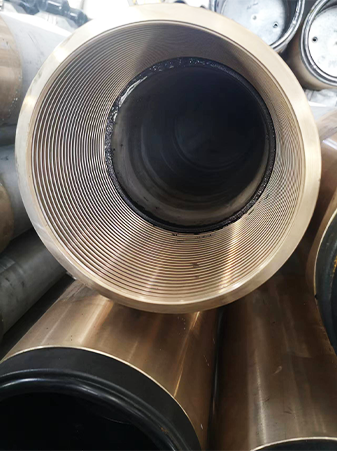- Afrikaans
- Albanian
- Amharic
- Arabic
- Armenian
- Azerbaijani
- Basque
- Belarusian
- Bengali
- Bosnian
- Bulgarian
- Catalan
- Cebuano
- Corsican
- Croatian
- Czech
- Danish
- Dutch
- English
- Esperanto
- Estonian
- Finnish
- French
- Frisian
- Galician
- Georgian
- German
- Greek
- Gujarati
- Haitian Creole
- hausa
- hawaiian
- Hebrew
- Hindi
- Miao
- Hungarian
- Icelandic
- igbo
- Indonesian
- irish
- Italian
- Japanese
- Javanese
- Kannada
- kazakh
- Khmer
- Rwandese
- Korean
- Kurdish
- Kyrgyz
- Lao
- Latin
- Latvian
- Lithuanian
- Luxembourgish
- Macedonian
- Malgashi
- Malay
- Malayalam
- Maltese
- Maori
- Marathi
- Mongolian
- Myanmar
- Nepali
- Norwegian
- Norwegian
- Occitan
- Pashto
- Persian
- Polish
- Portuguese
- Punjabi
- Romanian
- Russian
- Samoan
- Scottish Gaelic
- Serbian
- Sesotho
- Shona
- Sindhi
- Sinhala
- Slovak
- Slovenian
- Somali
- Spanish
- Sundanese
- Swahili
- Swedish
- Tagalog
- Tajik
- Tamil
- Tatar
- Telugu
- Thai
- Turkish
- Turkmen
- Ukrainian
- Urdu
- Uighur
- Uzbek
- Vietnamese
- Welsh
- Bantu
- Yiddish
- Yoruba
- Zulu
Optimizing Nipple Placement in Tubing for Enhanced Performance and Efficiency
Understanding the Importance of Seating Nipple in Tubing Systems
In the world of oil and gas extraction, the design and functionality of equipment play a pivotal role in the efficiency and safety of operations. One critical component in this setup is the seating nipple, particularly in tubing systems. The seating nipple serves as a connection point in various applications, providing a pivotal role in the overall performance of the tubing strings. In this article, we will explore the significance of the seating nipple in tubing systems, its design, and its operational benefits.
What is a Seating Nipple?
A seating nipple is a mechanical device installed in a tubing string that allows for the secure placement and retrieval of downhole tools or equipment. It consists of a specially designed profile that enables the tools to seat properly, ensuring a reliable connection. Seating nipples come in various designs and sizes, depending on the specific requirements of the well and the tools being utilized.
These nipples can accommodate a range of downhole equipment, including packers, plugs, and rod pumps, making them essential for various stages of production and maintenance. The correct configuration of seating nipples can significantly influence the effectiveness of these tools and the overall productivity of the well.
The Design of Seating Nipples
The design of seating nipples varies based on their intended application. Commonly used designs include smooth bore, threaded, and profile types, each tailored to different operational needs. A well-designed seating nipple will feature a robust and durable construction, as it must withstand significant pressure and environmental conditions present in downhole scenarios.
Moreover, the internal profile of the nipple is crucial, as it determines how effectively tools can seat and unseat during operation. For example, the taper or groove within the seating nipple aids in the proper alignment and retention of the tool, reducing the risk of equipment mishaps that can lead to costly downtime.
seating nipple in tubing

Benefits of Using Seating Nipples
1. Operational Efficiency One of the primary benefits of incorporating seating nipples into tubing systems is the enhanced operational efficiency they provide. Properly seated tools will function more effectively, lowering the risk of leaks or failures that could disrupt production. This efficiency is vital, especially in high-stakes environments where time and resources are limited.
2. Cost-Effectiveness By ensuring that the downhole tools are secured in place and can be easily retrieved, seating nipples help minimize the need for costly workovers or unexpected repairs. This reliability translates to lower operational costs over time, making it a beneficial investment for operators in the oil and gas sector.
3. Safety The safety of operations is paramount in any industrial setting, and the oil and gas industry is no exception. Properly seated tools reduce the risk of accidents related to equipment failure. By allowing tools to perform their intended function without unnecessary complications, seating nipples contribute to a safer working environment.
4. Versatility Seating nipples are versatile and can be adapted to various types of downhole tools, making them suitable for a range of operations—from initial drilling to maintenance and production efficiency enhancements. This versatility is essential as it allows operators to utilize seating nipples in different scenarios, enhancing the overall functionality of their tubing systems.
5. Improved Production Rates Efficient seating of downhole tools directly correlates with improved production rates. When tools such as packers and plugs are seated correctly, it leads to better sealing capacities, enhanced hydrocarbon flow, and subsequent increases in production output.
Conclusion
In conclusion, seating nipples are a crucial component in tubing systems utilized in the oil and gas industry. Their design, operational benefits, and significant contributions to efficiency and safety underscore their vital role. As technology progresses and the demand for efficient hydrocarbon extraction continues, understanding and optimizing the use of seating nipples will become even more critical. Operators must prioritize the selection and maintenance of these components to ensure the successful operation of their downhole activities, ultimately leading to a more productive and profitable output.
-
Tubing Pup Joints: Essential Components for Oil and Gas OperationsNewsJul.10,2025
-
Pup Joints: Essential Components for Reliable Drilling OperationsNewsJul.10,2025
-
Pipe Couplings: Connecting Your World EfficientlyNewsJul.10,2025
-
Mastering Oilfield Operations with Quality Tubing and CasingNewsJul.10,2025
-
High-Quality Casing Couplings for Every NeedNewsJul.10,2025
-
Boost Your Drilling Efficiency with Premium Crossover Tools & Seating NipplesNewsJul.10,2025







